How to Grow & Care for Pistachio Trees
Written by Iris
Jan 30 2023
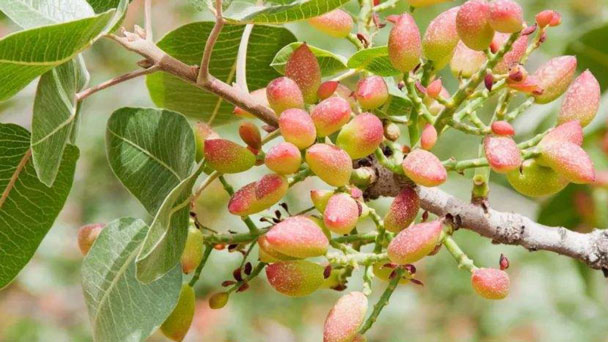
Pistachio Nut Trees is the most popular variety for commercial production and home gardeners. Pistachio trees are popular as garden trees for viewing and fruit production. Here are details on how to grow and care for Pistachio Trees.
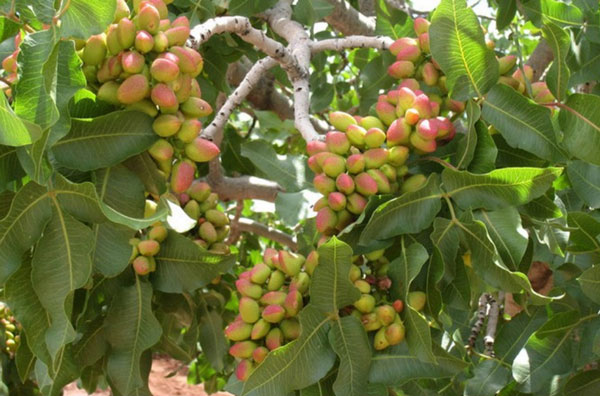
Here is what you need to do is grow a pistachio tree from seed.
Put a damp paper towel in a plastic baggie and put the pistachio seeds into the damp paper towel. Make sure you don’t put too many; five seeds is fine. Poke a few holes in the baggie for air circulation.
Wait a week for the seeds to germinate. The bag needs to be kept at room temperature in an undisturbed spot.
Once you see sprouts that burst from the seed, transplant it to a cup filled with soil. Make sure the cup has drainage holes. Keep the soil damp, but don't overwater because it will slow the tree's growth.
Over time, you'll need to transplant into larger pots until it’s time to plant it outside.
The trees don't like having their roots exposed, so it is easiest to use peat pots as you transplant and finally plant pistachio trees.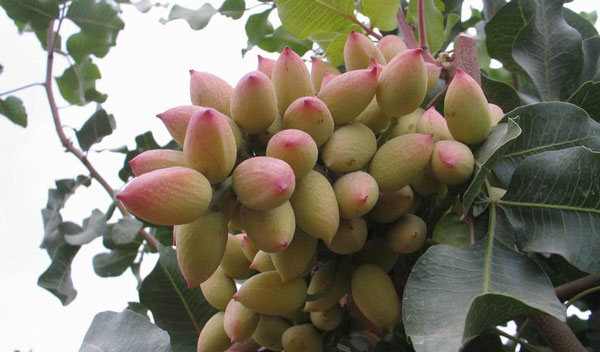
Your tree will appreciate deep, infrequent waterings, allowing the water to saturate the soil. In the heat of summer, extra water is appreciated. Allow the water to drain before watering again; the pistachio tree does not do well in soggy soil or standing water. For large orchards, many people use irrigation systems.
Remove any upper branches that will shade the tree trunk and pinch those that are not scaffolded to 4 to 6 inches (10-15 cm.) from the trunk. Then in June, prune the scaffold branches 2 to 3 feet (61-91 cm.) in length to promote side branching, while leaving the lateral shoots to aid in shading the trunk as it grows.
Maintain the open center structure as the tree grows taller by choosing secondary scaffold branches. You may prune two to three times a year, with summer pruning occurring in the spring and summer and dormant pruning in the fall.
Common pistachio tree diseases are blight, leaf wilt, powdery mildew, root rot, and wilt. Two of the worst insect offenders are pistachio psyllids and twig borers.
Read More: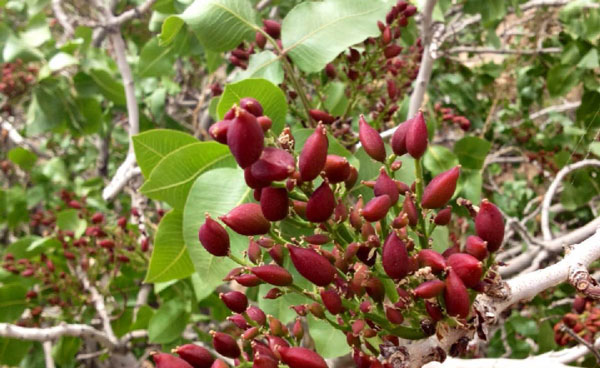
There are a few types of vera Pistachio Trees that grow well in the U.S.
Platinum is a vigorous grower that can handle some cold. This variety is a clone developed after verticillium wilt nearly wiped out commercial pistachio crops in the U.S.
Pioneer Gold is another clone that resists wilt. It’s the most widely grown variety in the U.S.
Kerman is a new type introduced to the U.S. from Iran. It produces large, bright green fruits and bears in 6 years. Plant with the Peters variety as a male pollinator.
Joley never gained commercial success because it has smaller fruits, but it's a good option for home growers.
Red Allepo is popular in Syria. It blooms early and grows crisp, crunchy fruits.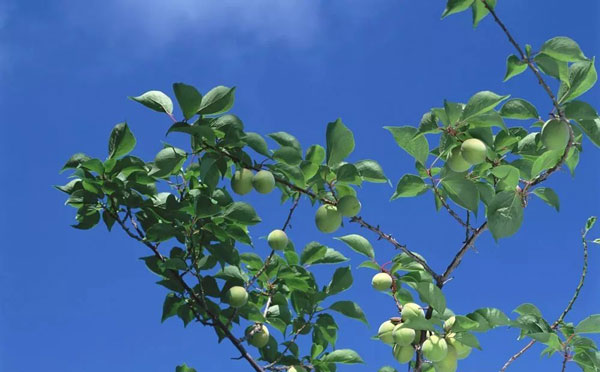
Water potted Pistachio Tree 1 times a day in spring and summer and reduce the water supply in autumn and winter to 1-2 times a week.
Where Do Pistachio Trees GrowWhen to Grow Pistachio TreesHow to Grow Pistachio Trees from SeedsHow to Grow & Care for Pistachio TreesLightSoilWateringTemperature & HumidityFertilizerPruningPests & DiseasesVarieties of Pistachio TreesPistachio Trees FAQCan Pistachio Trees be Grown in ContainersWhere do Pistachio Trees Come fromHow Much Water Does a Pistachio Tree NeedDo Pistachios Grow on Trees
Where Do Pistachio Trees Grow
The ideal locations for growing pistachio trees are areas that have cold but not frigid winters, hot summers, and little rain. Semi-arid desert locations are ideal. pistachio trees prefer temperatures that are above 100℉ during the day. The trees need winter months that are cold enough to send them into dormancy, around 45℉ or below. Pistachio Trees don't like high elevations because of the cooler temperatures that reach below 15℉. Pistachio Trees don’t grow well in areas with high humidity.
Read More:
When to Grow Pistachio Trees
Winter is the best time to plant pistachio tree, as it will be dormant. You can also plant in the early spring before your tree has come out of its winter sleep. It is best to wait until the threat of a heavy, killing, frost has passed.How to Grow Pistachio Trees from Seeds
If you decide to grow pistachio Tree from seeds, you need to buy raw pistachio seeds. Buying directly from a nursery ensures you get the best product, but you can grow pistachio trees from the seeds purchased in the grocery store.Here is what you need to do is grow a pistachio tree from seed.
Put a damp paper towel in a plastic baggie and put the pistachio seeds into the damp paper towel. Make sure you don’t put too many; five seeds is fine. Poke a few holes in the baggie for air circulation.
Wait a week for the seeds to germinate. The bag needs to be kept at room temperature in an undisturbed spot.
Once you see sprouts that burst from the seed, transplant it to a cup filled with soil. Make sure the cup has drainage holes. Keep the soil damp, but don't overwater because it will slow the tree's growth.
Over time, you'll need to transplant into larger pots until it’s time to plant it outside.
The trees don't like having their roots exposed, so it is easiest to use peat pots as you transplant and finally plant pistachio trees.

How to Grow & Care for Pistachio Trees
Light
Because of their love of heat, you may have guessed that pistachio trees also love sunlight. Pistachio trees need full sunlight to prosper and take full advantage of the hot, arid climate it prefers.Soil
Next you need to consider your soil; pistachio trees do well in all soil types but really thrive in relatively deep, light, dry and sandy loam soils, with high calcium carbonate (CaCO3) concentration. They do not tolerate wet, heavy soils. Well-draining soil is a must! They do tolerate high-levels of salinity in the soil.Watering
The pistachio tree is very drought-tolerant and prefers arid landscapes. However, do not allow this reputation to think it gives you an excuse to deprive your pistachio tree of water. They still require plenty of water to produce an abundant nut harvest.Your tree will appreciate deep, infrequent waterings, allowing the water to saturate the soil. In the heat of summer, extra water is appreciated. Allow the water to drain before watering again; the pistachio tree does not do well in soggy soil or standing water. For large orchards, many people use irrigation systems.
Temperature & Humidity
Optimal temperatures for growing pistachio tree hover at around 100 degrees Fahrenheit. Despite loving such hot temperatures, it does require colder temperatures (45 degrees Fahrenheit or below) for a portion of the year. This temperature dip triggers dormancy, which is crucial for surviving winter weather. However, pistachio trees can't tolerate frozen ground. Unlike tropical plants that like hot temperatures and humidity, the pistachio tree does not like too much moisture. It thrives in hot, arid climates.Fertilizer
Pistachio trees need to be fertilized once each spring, starting in the second year. You can add 10-10-10 NPK fertilizer. You may want to do a soil test before doing so. A soil test can help you determine what nutrients it’s lacking and optimize the fertilizer accordingly. Nut trees require nitrogen to thrive.Pruning
Since these trees are classified as fruit trees, pruning pistachio trees are integral to producing higher quality fruit while controlling growth. For young trees, select the three to five branches you wish to use as scaffold branches or the primary structure of your pistachio in April of the first growing season. Choose those that are equally spaced around the trunk but not across from each other with the lowest branch 24 to 32 inches (61-81 cm.) above the soil and cut all other branches below this.Remove any upper branches that will shade the tree trunk and pinch those that are not scaffolded to 4 to 6 inches (10-15 cm.) from the trunk. Then in June, prune the scaffold branches 2 to 3 feet (61-91 cm.) in length to promote side branching, while leaving the lateral shoots to aid in shading the trunk as it grows.
Maintain the open center structure as the tree grows taller by choosing secondary scaffold branches. You may prune two to three times a year, with summer pruning occurring in the spring and summer and dormant pruning in the fall.
Pests & Diseases
Prevention and close attention plays a significant role in combating most pests and diseases when growing pistachio trees. Cleaning up fallen debris under the tree helps keep pests and diseases from making a home. Watering only the tree’s base, instead of the foliage, can help deter some of the fungal attacks. In extreme cases, the use of a fungicide, or pesticide, may be necessary. Insecticides, and traps, help control six-legged pests that feast on pistachio trees.Common pistachio tree diseases are blight, leaf wilt, powdery mildew, root rot, and wilt. Two of the worst insect offenders are pistachio psyllids and twig borers.
Read More:
- Why Are Pistachios So Expensive
- Health Benefits of Pistachios - Nutrition Facts
- Can Dogs Eat Pistachios - What Are The Risks

Varieties of Pistachio Trees
There are several different types of pistachio plants, but only Pistacia vera is grown commercially. The Pistacia vera tree has long, grey leaves, and grows in USDA plant hardiness zones 7-11.There are a few types of vera Pistachio Trees that grow well in the U.S.
Platinum is a vigorous grower that can handle some cold. This variety is a clone developed after verticillium wilt nearly wiped out commercial pistachio crops in the U.S.
Pioneer Gold is another clone that resists wilt. It’s the most widely grown variety in the U.S.
Kerman is a new type introduced to the U.S. from Iran. It produces large, bright green fruits and bears in 6 years. Plant with the Peters variety as a male pollinator.
Joley never gained commercial success because it has smaller fruits, but it's a good option for home growers.
Red Allepo is popular in Syria. It blooms early and grows crisp, crunchy fruits.

Pistachio Trees FAQ
Can Pistachio Trees be Grown in Containers
Pistachio trees grow well in containers that do not crowd their roots for the first three to five years. Any longer than this can stunt the growth and cause damage to the tree's root system, especially the long taproot. It is good practice to watch your tree and transplant it into the ground as soon as possible.Where do Pistachio Trees Come from
Pistachio trees originated in Central Asia and the Middle East. Hot, dry, summers and cool winters provide the perfect climate for Pistachio Trees. Afghanistan, Iran, Italy, Syria, and Turkey produce most of the world’s Pistachio Trees. America has also become a significant producer of this valuable commodity. California's arid San Joaquin Valley produces over 90 percent of the Pistachio Trees in the United States.How Much Water Does a Pistachio Tree Need
The annual precipitation of planting areas that are suitable for Pistachio Trees is generally 200-400 mm, and the growth is good and the fruit is plump. However, in areas with annual precipitation below 80mm, Pistachio Tree can also grow, bloom and bear fruit. However, lack of water during the sensitive period of water demand in summer will lead to no fruit harvest.Water potted Pistachio Tree 1 times a day in spring and summer and reduce the water supply in autumn and winter to 1-2 times a week.
Do Pistachios Grow on Trees
Yes. Pistachio Trees are small deciduous trees. The height of the tree is about 10 meters, with odd-numbered pinnate compound leaves, and it has long age and slow growth. The seedlings called Pistachios need at least six years to bear fruit from the first year of seed planting. The fruiting rate increases year by year. The fruit is larger, oblong and long. It is about 2 cm wide and about 1 cm wide, and turns yellow-green or pink when cooked. It is native to Syria, Iraq, Iran, the southwest of the former Soviet Union and southern Europe.Latest Updated
- How to Grow & Care for Pistachio Trees
- Why Are Pistachios So Expensive - 4 Main Reasons
- Health Benefits of Pistachios - Nutrition Facts & How Does It Work
- Can Dogs Eat Pistachios - What Are The Risks
- Where Do Pistachios Come from?
- Where and How Do Pistachios Grow - Pistachio Nut Trees Care
- Pistachio Tree Profile
- Hong Kong Orchid Tree Problems: Diseases And Remedies
- Hong Kong Orchid Tree Pros And Cons - How Fast Does It Grow
- How to Grow and Care for Hong Kong Orchid Tree
Popular Articles
- Winter maintenance of Antirrhinum Majus
- How to Grow Terminalia Mantaly Tree
- How to Grow and Care for Crossostephium Chinense
- How to grow Antirrhinum Majus in spring
- Peristeria Elata (Dove Orchid) Profile: Info & Care Guide
- Underwatered Snake Plant (Sansevieria Trifasciata) - Signs And How To Fix
- How to Care for Brazilian Jasmine Plant (Mandevilla Sanderi)
- How to Grow & Care for Graptopetalum Purple Delight in Summer
- Rosa Chinensis (China Rose): Plant Growing & Care Tips
- How to Care for Baby Sun Rose (Aptenia Cordifolia)